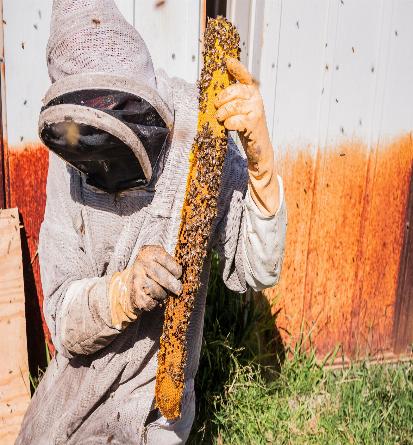Because of their hard work ethic, complex social systems, and vital function in our ecology, bees have been celebrated for centuries. But in recent years, the suffering of bees has emerged as a central issue in eco-awareness. The proliferation of Colony Collapse Disorder, pesticide use, and the degradation of their natural environment all pose serious challenges to the survival of these hardworking organisms. This highlights the critical nature of the bee rescue endeavor.
**The Importance of Bees**
The value of bees to our ecology must be recognized before we can comprehend the significance of bee rescue. These little insects play a crucial role as pollinators worldwide. In reality, bees are responsible for pollinating around one-third of the food humans eat. Fruits, nuts, and vegetables are the backbone of many diets across the world and fall under this category.
In addition, bees help wildflowers flourish, which benefits numerous other species. They help spread seeds, which is important since healthy soil is essential for healthy plants.
Bees and the Dangers They Face
The worldwide fast fall of bee populations is due to a number of factors:
Pesticides, especially neonicotinoids, are extremely dangerous for bees. Their capacity to feed, travel, and breed can all be negatively impacted by exposure. This has a direct bearing on the longevity of entire colonies.
Loss of **Habitat**: As human populations grow and agricultural practices become more intensive, wildflower-rich habitats are fragmented and eventually lost.
Thirdly, **Diseases and Pests**: Pathogens like the Varroa mite that are widely dispersed weaken bee colonies and make them more susceptible to other pressures.
4. **Climate Change**: Changing weather patterns can throw off the perfectly timed emergence of bees from their hives and the blooming of flowers.
Help from the Bee Rescue Team!
Organizations and people dedicated to saving bees are working around the clock to address these threats. They frequently do the following:
– **Rescuing and Relocating**: When bees set up hives in uncomfortable places for humans, as within the walls of homes, bee rescuers remove and shift the colony to a new, more suitable position.
Bee rescuers use educational initiatives including seminars, webinars, and school programs to spread the word about the plight of the honeybee and the dangers it faces.
**Habitat Restoration**: **Bee Rescuers** assist restore critical bee habitats by planting native wildflowers and making bee-friendly surroundings.
Advocacy: Bee protection organizations work to improve pesticide rules and other laws aimed at keeping bee populations healthy.
How You Can Be of Service
Organizations dedicated to saving bees play a crucial role, but individuals may make a big difference, too. This is how you can help:
Plant native wildflowers, shrubs, and trees to make a garden that is welcoming to bees. You should put out water and even build hives for the bees.
Avoid using pesticides that are harmful to bees by opting for organic alternatives and staying away from neonicotinoids in particular.
When you buy local honey, you’re also supporting the beekeepers who play an important part in preserving bee populations.
Teach and Speak Out: Inform your loved ones and neighbors about the role that bees play in our ecosystem. The more the public’s awareness, the more progress we can make as a group.
In conclusion, bees are crucial to the well-being of our world, and the alarming rate at which they are disappearing should worry everyone. Although saving bees is just one part of the larger conservation effort, it’s a very important one. Voting for a world where bees may flourish happens every time we take action, whether it’s planting a flower or contributing to local bee rescue projects. When bee populations increase, so do the populations of the many species, including humans, who rely on healthy ecosystems.
